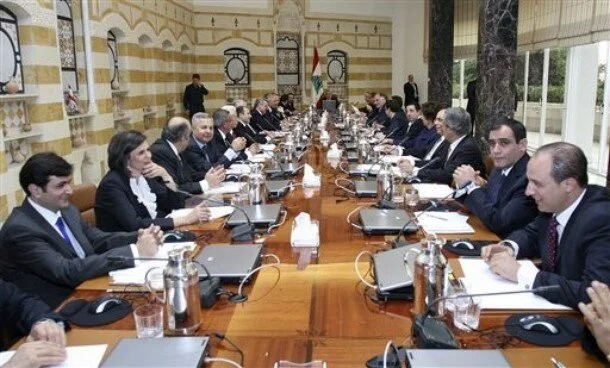Understanding Lebanon's Politics
Lebanon’s June elections were followed by a 5-month deadlock in forming a cabinet. The elections were seen as a victory for Prime Minister-designate Saad Hariri, backed by the United States and Saudi Arabia, and a loss for Hezbollah and its allies. In that election, Hariri’s coalition won a decisive 71 out of 128 seats in Parliament. However, the Lebanese constitution dictates that the cabinet is composed of a coalition of majority and minority parties, a requirement that has always been a recipe for deadlock.In September, Hariri put forward his first list of ministers, but his choices were rejected by the opposition, composed of the Christian Free Patriotic Movement, Hezbollah and Amal, the Shiite political and paramilitary movement.After months of arduous negotiations, Hariri formed a new unity government on November 9th by submitting a list which included members of the opposition, and was confirmed as Prime Minister. The cabinet is now composed of 15 ministers from the Hariri-led majority, 10 ministers from the Hezbollah-led opposition and its allies, and 5 ministers nominated by President Michel Suleiman. Only 2 of the cabinet ministries, Agriculture and Administrative Reform, will be held by Hezbollah, which has in the past exercised its power indirectly.This cabinet is the first representative of free elections since the November 2007 deadlock, when five cabinet members of Hezbollah and its allies quit over power issues. The deadlock escalated into street fighting ignited by Hezbollah over the state’s attempted control of its telecommunications system. In May 2008, Hezbollah seized parts of Beirut. While the death toll for the conflict is still disputed, the fighting ended when the parties entered into a power-sharing agreement. This arrangement gave Hezbollah and its allies a cabinet veto, and the government backed off control of Hezbollah’s telecommunications.The groups are believed to have agreed to the new cabinet composition because of improved relations between the state and the governments of Syria and Saudi Arabia, which exercise considerable influence in Lebanon. Additionally, in October, Prime Minister Hariri agreed to allow Michel Aoun, leader of Lebanon’s largest Christian sect and an ally of Hezbollah, control of the telecommunications ministry. Another factor may have been the influence of Syria’s President Bashar al-Assad, who likely urged an end to the cabinet crisis before his diplomatic visit to France on November 13th. In the absence of an absolute majority, however, Lebanon’s new government will likely return to deadlock.The stability of the Lebanese government is important because Lebanon is at the heart of the Arab-Israeli conflict and is used as a proxy by other nations to wield their influence in that conflict. Lebanon's civil war lasted from 1975 to 1990, and Israel has invaded Lebanon four times, including most recently in 2006.The primary challenge facing the cabinet will be charting a course that allows it to deal with both Hezbollah and Israel. The US government, which views Hezbollah as a terrorist group, said that it will cooperate with the Lebanese government but not with Hezbollah Cabinet ministers. Nicole Shampaine, the Director of the State Department’s Near East Affairs Bureau Office for Egypt and the Levant, stated that there is no obstacle to cooperation with any official of the Lebanese government except those of Hezbollah. She declared U.S. support for the government of Prime Minister Saad Hariri.On November 30th, Hassan Nasrallah, Hezbollah’s Secretary General, read the party’s new manifesto and stated, “Through its long path and its victories, the Resistance … has grown from a liberating power to a defense and deterrence power, in addition to its political and internal roles as an influence in building a just and capable state.” This declaration was perceived as reaffirming Hezbollah’s power and hinting that the party intends to formulate Lebanon’s defense.Nasrallah also recently declared that Hezbollah has more than 30,000 rockets and has replaced the arms used in the 2006 war. These weapons are hidden in Shia areas of Lebanon, and Hezbollah argues that it requires the weapons for its defense against Israel. In order to avoid a crisis, the Cabinet, towards the end of last year, endorsed Hezbollah’s right to keep its arms and “its resistance” to “liberate Lebanese territory.” Although the veto of Hezbollah and its allies expired with the June election, this endorsement gives Hezbollah a “virtual veto.” This endorsement is a signal that the Lebanese government will not control Hezbollah's increasing strength and will not abide by UN Resolution 1701, which ended the July 2006 war and calls for Hezbollah to disarm.Israel has been watching Hezbollah's weapons closely and has stepped up its incursions into Lebanese airspace. On November 4th, Israeli forces discovered 500 tons of weapons on a ship bound for Syria. Israel seized the weapons, which are believed to have originated from Iran and destined for Hezbollah, although Hezbollah denied this accusation. The combination of Israel's and Hezbollah's weapons, and the Lebanese government’s endorsement of Hezbollah's right to keep those weapons, is a deadly mixture. Under these circumstances, it only takes a spark to ignite another war.
